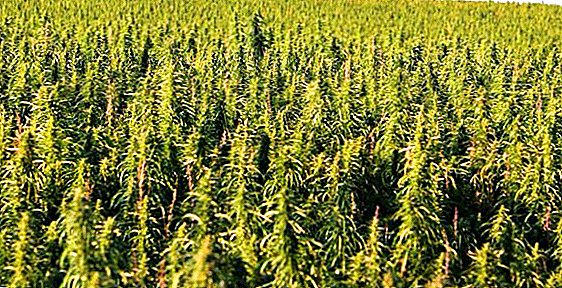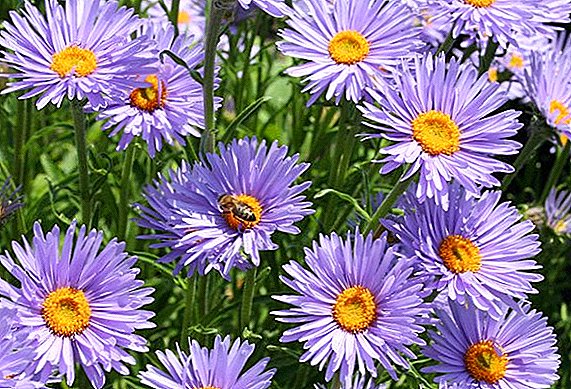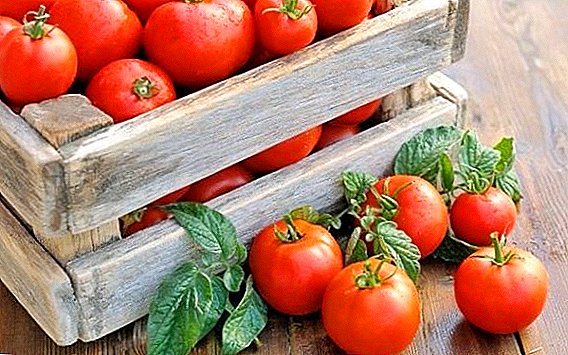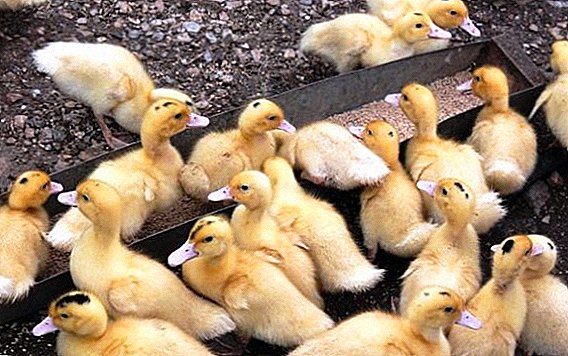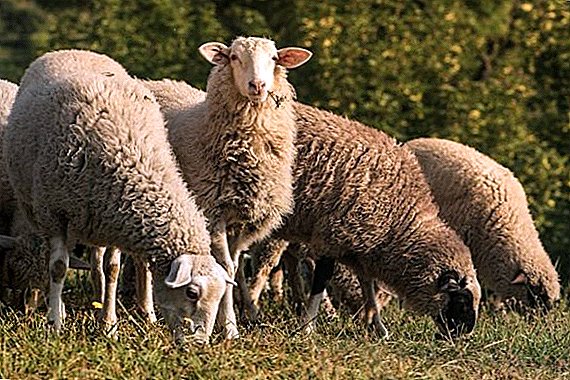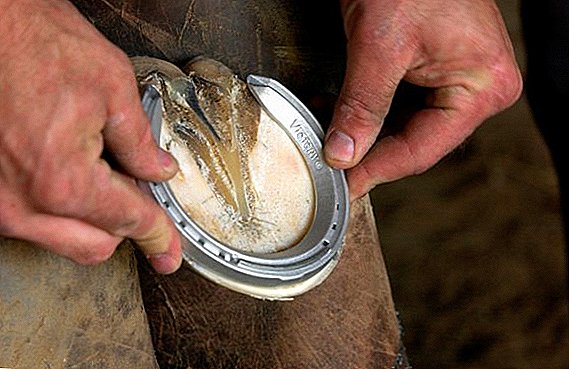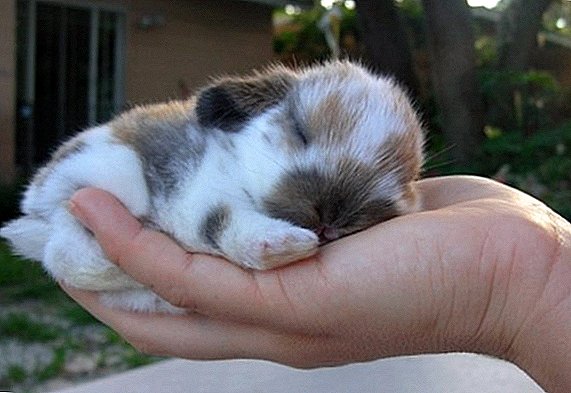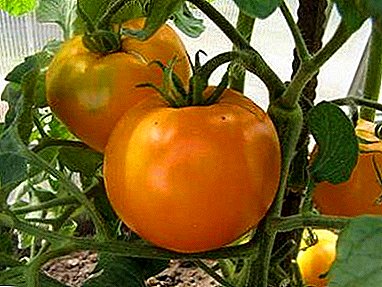
Orchids - flowers of unusual beauty, attracting the eyes of any person. It evokes a sense of admiration, affection, for this very reason, many flower lovers are trying to grow this magnificent plant at home.
But it should be understood that the cultivation of this exotic beauty entails a lot of trouble. But the topic of reproduction is key in this matter.
Where are and how to look?
This plant is very common and has more than 30,000 varieties.
They can be examined only under a microscope, they are so small, they can be taken for dust. If you compare an orchid seed with a grain of wheat, which they are very similar in appearance, then the grain is 15,000 times more.
Orchid seeds meet the following parameters:
- Small, like dust. One seed has a size of 0.35-3 mm in length, and in width from 0.08 to 0.3 mm.
- Color - cream, beige, light brown.
- Narrow, elongated shape.
Many will ask, how do plants grow in nature with such small and demanding seeds? It's all about the number of seeds - there are more than 5 million of them, in one box. The wind spreads the seeds, they cling to the bark of the trees, but only a few germinate.
We offer on the video to look like a box of orchids with seeds:
Distinctive signs of the present from the fake
It is quite simple - cream dust should be in the bag. Some flower lovers write seeds from the Internet to the house, and having received seeds of a different species, they vainly hope to grow an exotic beauty from them, but this, unfortunately, is impossible.
Some, buying in the store the seeds of orchids, having probed large seeds, think that these are boxes - this is also not true. Worth knowing that as soon as the seeds ripen, the box cracks and they pour outso that it cannot be maintained in the whole state.
A photo
Look at the photo, what orchid seeds look like.




Is it possible to grow a flower from seeds?
If you bought or discharged orchid seeds and they turned out to be real fortunately, then theoretically you can get beautiful, flowering plants from this material in 4-6 years. But this process is very laborious and requires not only patience, but also accuracy.
You need to purchase the appropriate equipment and the necessary material, while maintaining sterility and optimum temperature. Growing an orchid from seed is a real lab in an apartment.
Is it on sale and how much is it?
In seed shops you can find orchid seeds, and writing them on the Internet is not difficult.
The cost of planting material depends on some factors.:
- varieties;
- manufacturer;
- quality;
- packaging material.
But the average cost of 20 seeds ranges from 180 to 250 rubles.
It should be said separately about the seeds that can be purchased on Chinese websites, they cost up to 50 rubles per 100 pieces. But despite the cheapness, it is worth understanding the risks, since it is almost impossible to obtain high-quality material. But still, there are platforms where they sell good planting material from which to really grow magnificent flowers.
How to get at home?
Orchid seeds can be obtained at home, for this you need to conduct cross-pollination during flowering.
 Take a soft brush and transfer the pollen from one inflorescence to another.
Take a soft brush and transfer the pollen from one inflorescence to another.- As soon as the plant ottsvetet, boxes will appear in which the seeds will ripen.
- Three months later, the box is wrapped in a paper napkin, in order not to lose seed, when cracking the testicle.
- The box will surely crack as soon as the seeds ripen.
- After this, the testis is cut, the seeds are poured out of the napkin on a clean sheet of paper.
- Split the seed.
- Wrap each piece in a separate white piece of paper, put it in a plastic container and put it in the fridge until the moment you plant it.
We offer to see a visual video of orchid pollination at home:
Advantages and disadvantages
There are aspects that can be attributed to the minuses of growing orchids from seeds:
- the complexity and complexity of the process;
- requirements of planting material for sterility and nutrient mixture;
- duration;
- the risk of acquiring poor quality planting material.
But, despite this, you can find certain advantages in this process - this is a pleasure that can be obtained by observing the process of seed germination. And when these small seeds grow into beautiful, flowering plants, all the cons will turn into pluses. But it is worth remembering that you only get a flowering plant in 5 years.
Cultivation instructions
As mentioned above, before sowing the seeds, you need to prepare everything you need.
Inventory and sterilization
The store should be purchased:
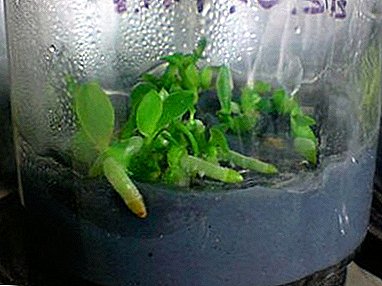 glassware - these can be tubes, glass flasks or 100 gram jars with lids, which will be hermetically sealed;
glassware - these can be tubes, glass flasks or 100 gram jars with lids, which will be hermetically sealed;- cotton wool and a sterile bandage or gauze, from this material will need to make tubes for test tubes;
- test tube rack if germination will be carried out in them;
- litmus paper to determine the acidity of the nutrient mixture;
- hydrogen peroxide 2%;
- special pipette or sterile syringe.
If regular glass jars are chosen for germination, then holes should be made in the lids for the glass tubes, since the seeds need air. As soon as the seeds are placed in the mixture, the tubes will need to be closed with gauze and cotton plugs.
Sterilization:
- The dishes are sterilized together with the prepared composition - this can be done in a double boiler, an oven or on an electric furnace by setting the dishes in a water bath.
- Sterilization must be in a vertical state, with tightly closed lids.
- If we talk about time, then together with the heating of the oven or steamer, this process will take about an hour.
- Sterilization temperature 120 degrees.
- After sterilization, cool the composition to room temperature.
Seed preparation
As stated above, seed boxes are wrapped in a napkin, and as soon as the testicle bursts, the seeds are ready for sowing. In our case, they are already in the fridge, they just enough to get out of the container.
Planting media
Immediately it should be warned that the process is time consuming, requiring accuracy and care. You can, of course, buy a ready-made composition in the store, but if you want to go all the way to growing orchids from seeds yourself, then prepare the nutritional mixture at home.
Will need:
 1 liter of distilled water;
1 liter of distilled water;- agar-agar - 8 g;
- glucose - 10 g;
- complex phosphate-nitrogen-potassium fertilizer - 1.5 g;
- fructose - 10 g;
- root system stimulator - 5 drops;
- activated carbon - 1 g.
Procedure:
- Pour into a container of 0.5 liters of water, put on the fire, boil. During boiling add agar-agar, glucose and fructose. The fire is subtracted and the mixture is boiled until the agar-agar is completely dissolved.
- Heat the second part of the water, add fertilizer, coal, phytostimulator and mix well.
- Both compounds combine and check the acidity.
- The acidity of the nutrient mixture should be from 4.8 to 5.2 pH - this is the most favorable environment for the germination of orchid seeds. You can increase it with phosphoric acid, lower it with potash solution.
The nutritional composition should not be too liquid or thick, ideally, the germination mixture is a jelly.
In each 100 g jar pour 30 mg of the mixture and tightly cork, sterilize. Now it is worth checking the composition for sterility - to do this, leave the jars at room temperature. If during this time there is no pathological environment in the composition, then it can be used if a mold has appeared, then we throw everything out and start all over again.
Next, a visual video on how to prepare a nutrient medium for planting orchid seeds:
Preparatory stage
Before you put the jars with a solution for sterilization, you need to wrap the covers with foil, as the cover can tear off in the process of heating.
How to plant and germinate?
Before planting a flower at home, its seeds and nutritional composition must be carefully sterilized. To do this, prepare a solution of chlorine salt 10%.
- Pour 10 g of chlorine into a liter of water and mix until completely dissolved.
- Filter the mixture through gauze folded in several layers and drop seeds into it for 10 minutes.
- Using a sterile syringe, pull out the seeds and place them in the nutrient mixture through the tubes, which are immediately closed with a cotton plug. You can put the flasks for germinating seeds, while the air temperature should be 18-23 degrees, and the light day is 14 hours.
Next, a visual video of planting orchid seeds:
Seedlings care
 About a month later, pseudobulbs will begin to appear. After six months in the flasks will be green seedlings with roots, but seedlings can be transplanted only after a year.
About a month later, pseudobulbs will begin to appear. After six months in the flasks will be green seedlings with roots, but seedlings can be transplanted only after a year.
Orchids are transplanted into the substrate, which consists of sphagnum moss, fern roots and pine bark.
Transplant is performed in the following way.:
- the substrate is placed in boiling water for 30 minutes;
- open banks, pour in them a little boiled water;
- then pour the seedlings into a container with a base solution;
- take tweezers with rubber tips and transfer seedlings to the substrate, do not deepen;
- provide greenhouse conditions;
- sprinkle seedlings every day from a distance of 20 cm.
We offer to see a visual video about the care of orchid seedlings and their transplants:
Problems and difficulties
Difficulties in self-germinating seeds can be many:
- It is almost impossible to get seeds from orchids at home.
- It is not always possible to buy quality planting material.
- At any stage, the death of seeds or seedlings can occur, as the sterility for growing must be absolute.
At home, unfortunately, it is difficult to grow orchids in the seed way, so think about it before you decide on this not very simple process. There are more affordable ways to breed this exotic plant. But if you follow the rules and be patient, a positive result will not take long.


 Take a soft brush and transfer the pollen from one inflorescence to another.
Take a soft brush and transfer the pollen from one inflorescence to another. glassware - these can be tubes, glass flasks or 100 gram jars with lids, which will be hermetically sealed;
glassware - these can be tubes, glass flasks or 100 gram jars with lids, which will be hermetically sealed; 1 liter of distilled water;
1 liter of distilled water;